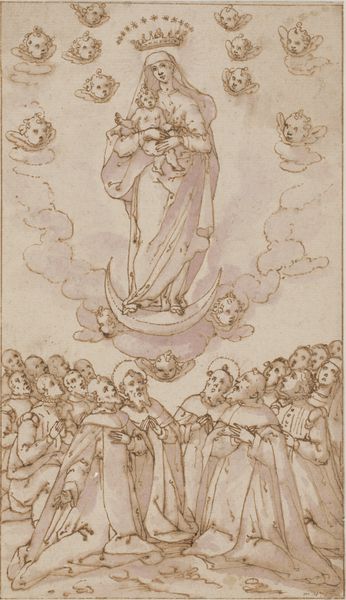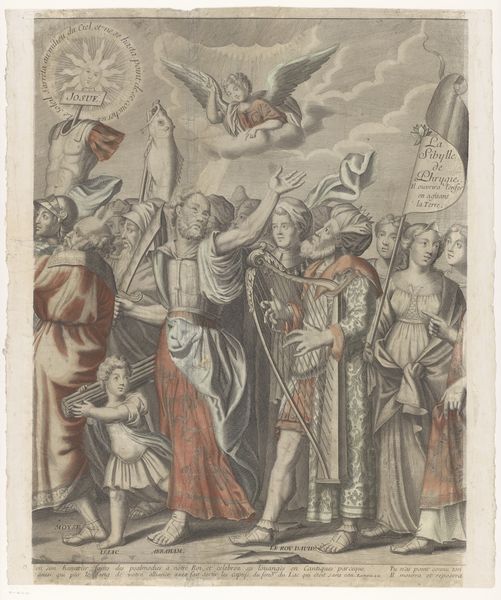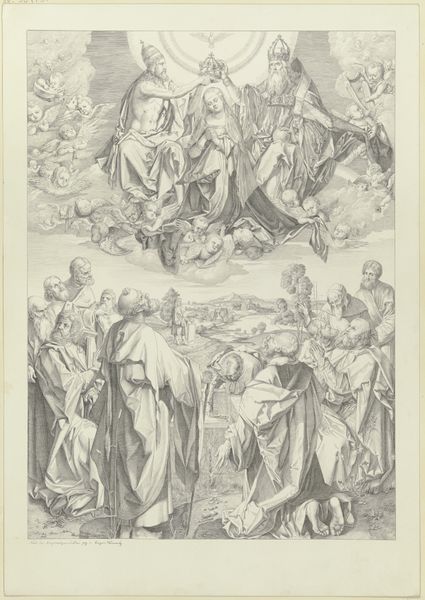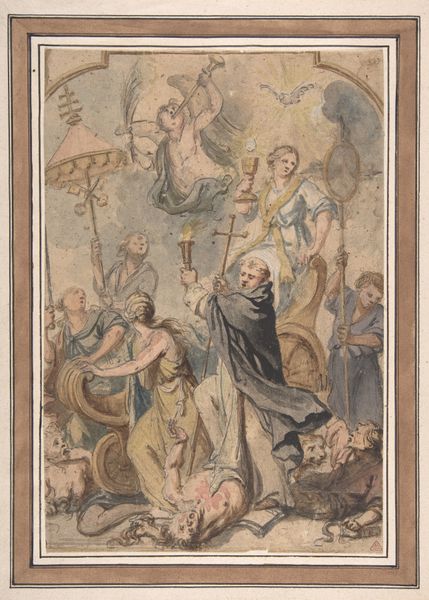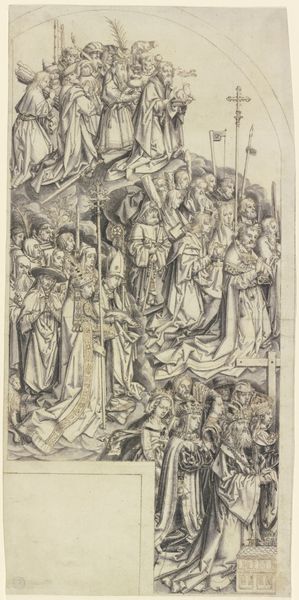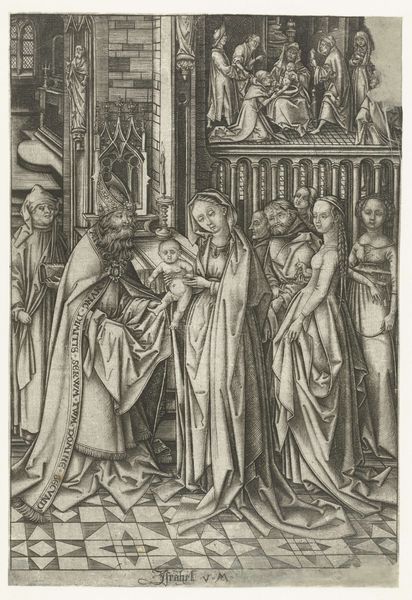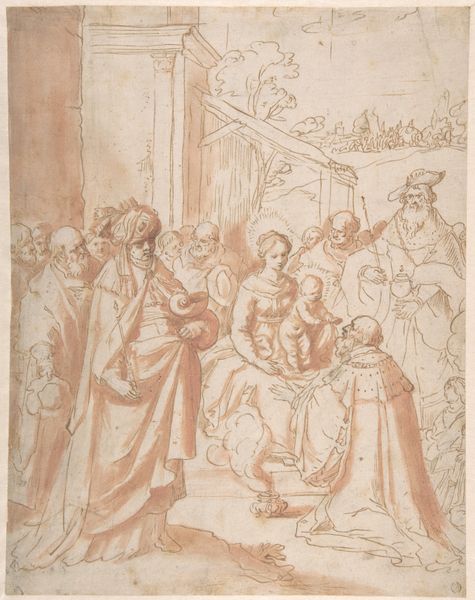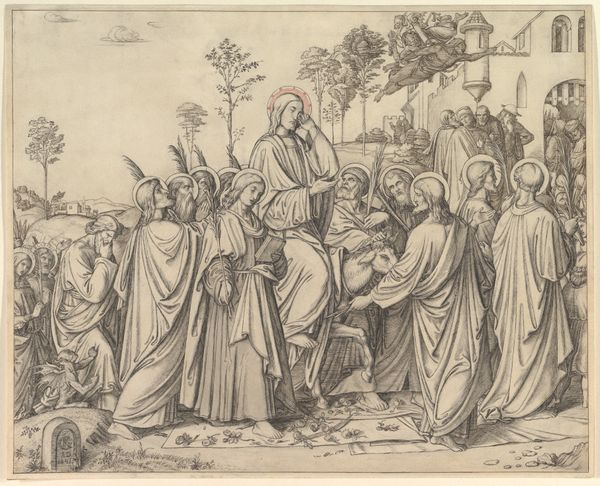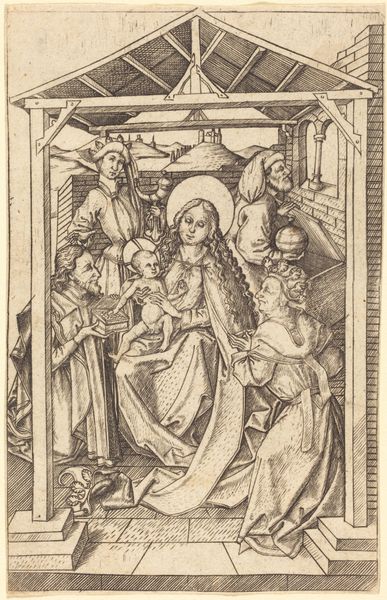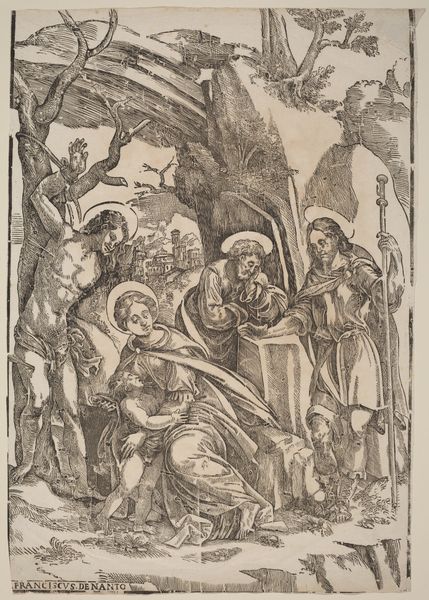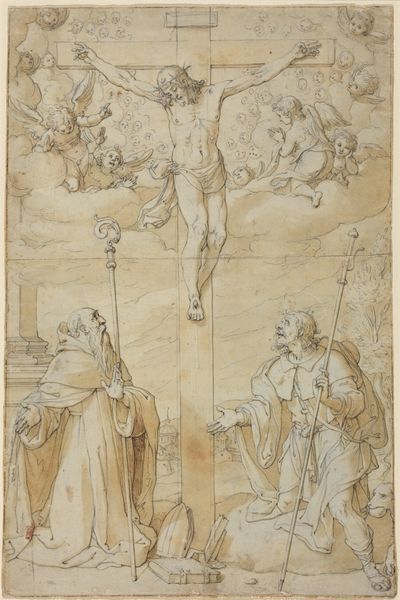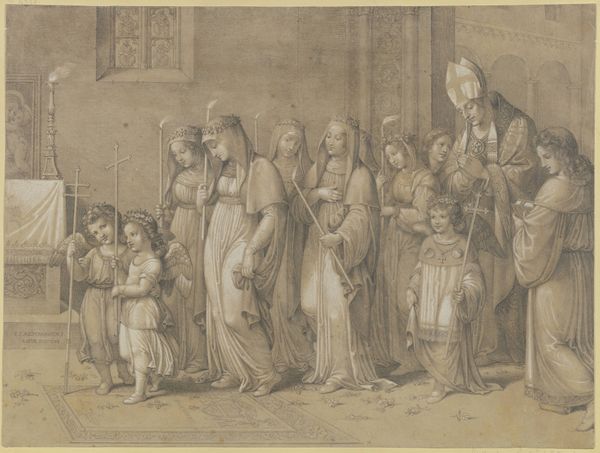
Innenseite des rechten Flügels eines Allerheiligenaltars 1511
0:00
0:00
drawing, coloured-pencil, tempera, paper, ink, indian-ink
#
drawing
#
coloured-pencil
#
tempera
#
figuration
#
paper
#
11_renaissance
#
ink
#
coloured pencil
#
indian-ink
#
history-painting
Copyright: Public Domain
Curator: I find myself captivated by the ethereal quality of this work; it seems almost dreamlike in its presentation of religious figures ascending into the heavens. Editor: Indeed. This is "The Interior of the Right Wing of an Altarpiece of All Saints" by Hans Holbein the Elder, dating from around 1511. He rendered it using tempera, ink, and colored pencil on paper. Looking at it now, it seems he combined diverse mediums, carefully and perhaps economically layering ink washes with sharper colored pencil to define forms and add texture. Curator: The piece, to me, speaks volumes about the cultural milieu in which it was produced. It reflects the religious fervor of the time, but also perhaps hints at the social stratifications present in the Church. Observe the distinct groupings—the earthly saints at the bottom, gradually ascending to a divine collective at the top. Editor: From my perspective, the arrangement has quite the narrative arc! The materials utilized allow for nuanced tonality, suggesting the artist was experimenting with the capabilities of combining classical techniques. There is a delicate process here of layering material and ideas that allows you to think about artistic production more holistically. Curator: Absolutely. Note the careful attention afforded to the figures’ vestments; the elaborate fabrics surely reflect the importance placed upon religious regalia. Consider the symbolic weight of their positioning. Moses at the top holding the Ten Commandments represents the origin of Judeo-Christian law, a pointed allusion to the societal codes dictating gender roles. Editor: This certainly provokes my materialist sensibilities. Consider the labor involved in producing these colors! Where were the materials sourced? Who ground the pigments? Who ultimately funded the artistic work, and what influence did that patronage exert on its imagery and symbolic construction? Curator: Fascinating angles for thought, surely highlighting art as both cultural artifact and social product. It encourages me to think about the role of religion and its implications in that particular era, highlighting intersectional layers concerning power dynamics, representation, and social ideologies. Editor: And on my end, it illuminates the material means, revealing not just the spiritual aspirations but also the very concrete economic and social conditions shaping this holy scene. Curator: Ultimately, it offers us much more than meets the eye at first glance; a layered commentary of its time. Editor: Absolutely. Its enduring power comes from what the work represents, yes, but the ways and means in which these narratives materialize before us is endlessly compelling.
Comments
No comments
Be the first to comment and join the conversation on the ultimate creative platform.
